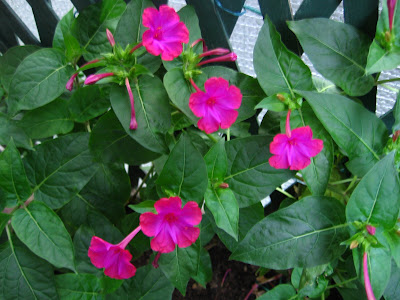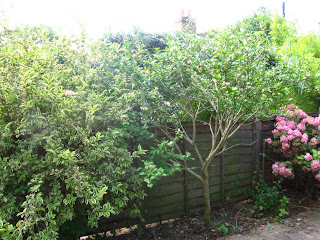
The last day of the month and the last chance to write about this month's featured flower on my calendar - hollyhocks.

Before I saw the calendar, I'd not realised that hollyhocks had medicinal uses, but apparently the flowers are good against things like sore throats, laryngitis, bronchitis and so on. You make a tea by steeping the petals in cold water for two hours, draining the liquid off and then either drinking it in small sips, or gargling with it - within five hours, so that it's fresh. The liquid can also be used externally for skin problems.
Browsing various articles on the web for more information on hollyhocks, I came across the book A Contemplation Upon Flowers: Garden Plants in Myth and Literature on Google books. It tells of a legend concerning a fairy island that would appear every Midsummer's Day at the point where the Wye and Severn rivers join on the border of Wales and England. Mortals were allowed to reach the island by means of a tunnel under the river and, though they never saw the fairies, would be treated to a day of music and feasting. The only condition was that nothing should ever be taken from the island, which the humans respected until one year a young girl wanted to take back a bunch of flowers which she had picked there. Her mother stopped her, but in secret the girl slipped one of the flowers into her pocket. As the people returned home through the tunnel, the girl turned into a hollyhock, her pink pinafore becoming the pink flowers of the plant. And never again did the island appear.




























